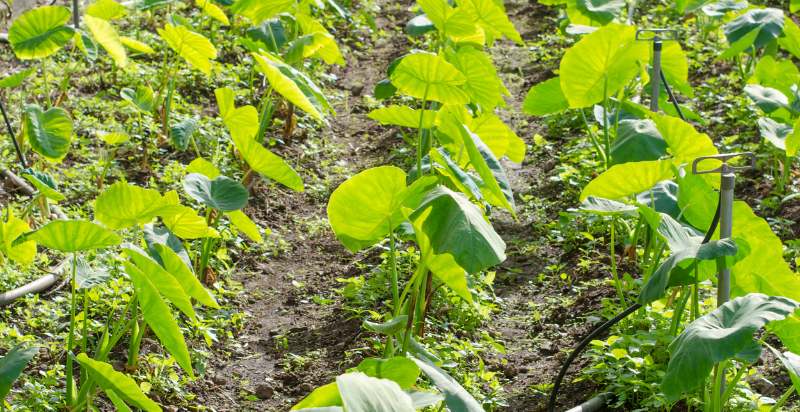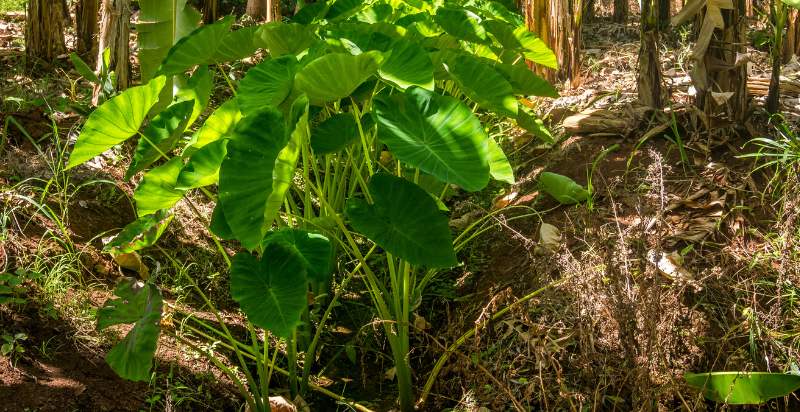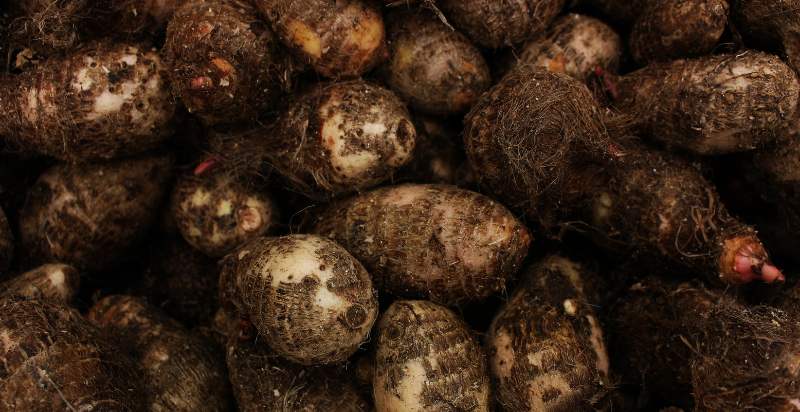Yam, scientifically known as Dioscorea, is a genus of over 600 herbaceous vines found throughout the tropical and subtropical regions of both hemispheres. Yams belong to the family Dioscoreaceae and are closely related to lilies, grasses, and palms. They can be found in many forms, including tubers, rhizomes, or corms. Here is everything you wanted to know about yams.
What is Yam?
Yam is a root vegetable from tropical and subtropical regions of the world. They belong to the family Dioscoreaceae and are closely related to lilies, grasses, and palms. Yams come in many forms, including tubers, rhizomes, or corms. The most commonly consumed yam is the Dioscorea rotundata, also known as the white yam. Yams are eaten in various ways and can be boiled, roasted, mashed, fried, or even grilled.
History and Origin of Yam:
Yams are believed to have originated in tropical rainforests of Africa and Asia, where it is thought that humans first started cultivating them between 10,000 and 8,000 BC. Yams were an important staple crop for many cultures, especially West Africa. The yam also played a role in cultural practices such as religious rituals, marriage ceremonies, and festivals. Yams were an important symbol in many African cultures and were believed to be a sacred gift from the gods.
Types of Yam:
There are over 600 species of yam and wide varieties within each species. Some common types include the white yam (Dioscorea rotundata), Chinese yam (Dioscorea batatas), Japanese mountain yam (Dioscorea japonica), and yellow yam (Dioscorea cayenensis). Other varieties include purple yam, water yam, and air potato.
Uses for Yam:
Humans have enjoyed yams for centuries due to their high nutritional content and versatility in cooking. The tuberous root of the yam plant is widely used as a food source around the world – from Africa to Asia, Latin America, and even parts of North America. In addition to being eaten as a vegetable, yam can be dried and milled into flour. It is also an ingredient in soups, stews, porridge, and other dishes.
Nutritional Benefits of Yams:
Yams are nutritious and versatile root vegetables. They are an excellent source of dietary fiber, vitamins, minerals, and antioxidants. The benefits of yam consumption include improved digestion, weight management, heart health, and reduced inflammation.
Yams contain good amounts of carbohydrates and fiber, making them great food for maintaining healthy blood sugar levels. They also provide small amounts of healthy fats and proteins, which can help with muscle growth, strength, and recovery.
Yams are rich in vitamins A and C and B vitamins like thiamin and folate. These vitamins help support the immune system to fight off disease and infection. Yams are also an excellent source of many minerals, such as iron, magnesium, phosphorus, zinc, manganese, copper, potassium, and selenium.
The antioxidants present in yam can also play a role in reducing inflammation throughout the body. Studies have shown that consuming yams may help reduce the risk of chronic conditions such as heart disease or diabetes by decreasing oxidative stress on cells.
Yams are a great addition to any diet due to their various health benefits. They can be cooked in various ways, making for an excellent side dish or main course for any meal. Enjoying yams could be the key to unlocking improved energy levels, better digestive health, and optimal immunity.
How to Plant Yam?
Yams are a popular vegetable crop grown in many parts of the world. They are an important source of carbohydrates and other nutrients for people in some parts of Africa, Asia, and Latin America.
Steps to Plant Yam
- Purchase yam seeds or tubers from a reputable seller: You can purchase yam seeds from a local garden center or an online seed supplier. When buying the tubers, look for firm ones without any blemishes or soft spots.
- Prepare the soil: The soil should be well-drained and slightly acidic (pH 5.5–6.5). When preparing your plot for planting, it’s important to ensure the soil is loose enough for the roots of the yam tubers to penetrate easily. Mix organic matter like compost or aged manure into the soil for the best results.
- Plant yam tubers: Plant each tuber about 6 inches deep in a hole that has been dug with a shovel or hoe. Space them 4 feet apart in rows 8 feet apart since they can spread out quite far once they start growing. Water thoroughly after planting to encourage growth and reduce stress on the plant while it is getting established.
- Maintain the soil: Keep the soil moist, but not soggy, throughout the growing season by watering in the early morning or late evening. You can also mulch around your plants to help retain moisture and keep weeds at bay.
- Harvest when ready: Yam tubers are usually ready for harvesting when they reach between 5-8 inches in length and have a thick skin with a reddish hue. To harvest yams, use a shovel to carefully dig them up and store them in a cool, dry place until you are ready to use them.
Growing yams can be an enjoyable hobby that yields delicious rewards! With proper soil preparation and maintenance during the growing season, you can ensure a successful harvest of this nutritious vegetable. So, why give it a try? You’ll be glad you did!

How to Care for and Grow Yams?
- Watering: As with most vegetables, yams require consistent moisture to thrive. Be sure to water your plants regularly and ensure the soil stays moist (but not soggy) throughout the growing season.
- Fertilizing: Yams will benefit from an application of fertilizer every 3-4 weeks during the growing season. A balanced 10-10-10 fertilizer should be used at a rate of 1 cup per 8 square feet of soil surface area.
- Weeding: Remove any weeds that appear around your yam plants, as they can compete for nutrients and moisture in the soil and reduce yields significantly. Hand pulling or using organic mulch are both effective methods of weed control.
- Pest and Disease Management: Yams are relatively resistant to pests and diseases, but you should look for any signs of infestation or infection. If you find any evidence of pests or fungal issues, treat them quickly with an organic pesticide or fungicide before spreading them throughout your crop.
Yams are a great addition to any vegetable garden as they are easy to grow and yield delicious tubers full of essential vitamins and minerals. By following these steps on how to plant yams, you can ensure a successful harvest every year.

Preventions From Pests and Diseases:
- Crop Rotation: Rotating crops in the garden is one of the best ways to prevent pests and diseases from taking hold in your yam crop. Planting yams in a different location each year helps reduce the buildup of pests and diseases that can occur if they are grown in the same spot yearly.
- Clean Tools: Make sure any tools or equipment used for planting, weeding, or harvesting your yams are thoroughly cleaned before and after use. This will help to limit the spread of any pests or diseases that could be present in them.
- Soil Health: Keeping the soil healthy by adding organic matter like compost or aged manure can also help to minimize pest and disease problems as it improves the quality of the soil.
- Plant-Resistant Varieties: Some varieties of yams have been bred to be more resistant to pests and diseases, so these can be a good choice for those looking to avoid any potential issues with their crop.
Taking a few simple precautions can help minimize the risk of pests and diseases in your yam crop and ensure a successful harvest each year.
Preventing Yield Losses:
- Irrigation: An important step in preventing yield losses is ensuring that your plants receive enough water during the growing season. Regular irrigation will help to ensure that your plants stay healthy and do not dry out, which can drastically reduce yields.
- Mulching: Applying a layer of organic mulch around the base of your yam plants will help retain moisture in the soil and protect against weeds and extreme temperatures.
- Staking: Yams can be quite top-heavy when producing lots of tuberous roots, so it is important to stake them to prevent them from falling over or being damaged by wind or rain.
- Harvesting: When harvesting yams, carefully dig up each tuber using a shovel, not damaging any other plants nearby. This will help maximize yields and keep disease levels down.
Following these steps can help ensure that your yam crop is as productive as possible and avoid costly yield losses.
Preventing Storage Losses:
- Proper Curing: It is important to properly cure any yams you wish to store for long periods. This involves removing dirt from the surface of the tubers and allowing them to dry off in a warm, dark place for several days before storing them.
- Temperature and Humidity: Yams should be stored in a cool, dark place with low humidity levels (ideally around 60-65% relative humidity ). This will help prevent the tubers from drying out or rotting.
- Ventilation: It is important to provide adequate ventilation around stored yams, as this helps to regulate temperature and humidity levels to stay fresh for longer.
- Check Regularly: Regularly check your stored yams for any signs of spoilage, such as soft spots, discoloration, or mold growth and dispose of any affected tubers before they can spread their contamination further.
How to Harvest Yams?
- Timing: It is important to harvest yams at their peak ripeness, as this will help ensure that the tubers have maximum flavor and nutritional value. Yams typically take 3-4 months to reach maturity and should be harvested in late summer or early fall.
- Digging: Carefully dig around the base of your yam plants using a garden fork or shovel. Take care not to damage any other plants nearby, and be sure that you go deep enough to get all the tubers, as some may be deeper than others.
- Cleaning: Once you have removed all the tubers from the ground, brush off any excess dirt with a soft brush and remove any blemished or bruised tubers.

How to Store Homegrown Yams?
- Proper Curing: Before storing any homegrown yams, it is important to properly cure them by removing dirt from the surface and allowing them to dry off in a warm, dark place for several days.
- Temperature and Humidity: Yams should be stored in a cool, dark place with low humidity levels (ideally around 60-65% relative humidity ) to prevent them from drying out or rotting.
- Ventilation: It is important to provide adequate ventilation around stored yams, as this helps to regulate temperature and humidity levels and ensure that they remain fresh for longer periods.
- Check Regularly: Regularly check your stored yams for any signs of spoilage, such as soft spots, discoloration, or mold growth and dispose of any affected tubers before they can spread their contamination further.
By following these steps, you can help ensure that your stored yams remain fresh for as long as possible, minimizing storage losses and allowing you to enjoy them throughout the year.

How to Use Yams?
Yams are nutritious root vegetables that can be used in various recipes. Whether you’re using them in side dishes, soups, or main courses, yams offer an array of sweet and savory flavors to enhance your meals. Learning to use yams can open up new possibilities for creating flavorful dishes.
Preparing Yams:
Before you get started cooking with yams, it is essential to know how to prepare them properly. When selecting a yam from the store, look for one with smooth skin and no blemishes or bruises. Once you have picked out the perfect yam, please give it a good rinse under cool water before preparing. If the skin is thick and difficult to peel, you can try microwaving the yam for a few minutes before peeling.
You can cut and prepare yams any way you like, from slicing them into circles to dicing them into cubes. To ensure that your yams cook evenly and quickly, keep your slices or cubes around the same size.
Cooking with Yams:
After preparing your yams, it is time to start cooking. One of the easiest ways to cook a yam is by baking it in the oven. Start by preheating your oven to 375 degrees Fahrenheit and then rub some oil onto each piece of the cut-up yam. Place them on a greased baking sheet and bake for 15-20 minutes. If you are adding a glaze or topping to your yams, add them during the last 5 minutes before they come out of the oven.
You can also cook yams on the stovetop with a skillet. Start by heating some oil in a pan and add your diced or sliced yam pieces. Cover the pan with a lid and cook it for 8-10 minutes, occasionally stirring until they become tender. For an extra layer of flavor, add herbs and spices such as garlic powder, onion powder, oregano, thyme, pepper, and paprika to the skillet while cooking.
No matter how you decide to cook them, yams are sure to be a delicious addition to your meal. With their sweet, nutty flavor and nutritional benefits, yams are perfect for adding texture and flavor to any dish. Now that you know how to use yams, there is no limit to the number of recipes you can create with them.

Potential Risks from Yams:
While yams are nutritious and delicious vegetables, some potential risks are associated with eating them. Yams contain oxalates, which can cause health problems in individuals with kidney or gallbladder issues. Additionally, raw yam contains high levels of cyanide, which can be toxic if consumed in large quantities. It is essential to thoroughly cook yams before eating them to reduce the amount of cyanide present.
In addition to these risks, people may also experience digestive upset from consuming too much yam. This can include abdominal pain and bloat as well as diarrhea. To prevent this from happening, limit your intake of yams to no more than one serving per day or about one cup when cooked.
By following these simple steps, you can ensure that you enjoy yams safely and healthily. Yams will become a staple in your kitchen with their versatile flavor and texture!
Conclusion:
Yams are nutritious and delicious vegetables that can be used in many different recipes. They can be cooked in various ways, including baking, boiling, grilling, or sautéing. Before consuming them, it is important to consider the potential risks associated with yams, such as oxalates and cyanide.
Additionally, it is best to limit your intake of yams to no more than one serving per day or about one cup when cooked. Finally, store your yams properly, so they remain fresh and flavorful for months! Enjoy all the delicious dishes you can make with this versatile vegetable!
- Everything you wanted to know about Green Tiger Tomatoes. - April 1, 2024
- Everything you wanted to know about Atomic Grape Tomatoes . - April 1, 2024
- Plum Types and Varieties: A Comprehensive Overview | GardenersMag . - April 1, 2024

1 thought on “What is Yam? How to Plant, Grow, and Harvest Yam Root”
Comments are closed.